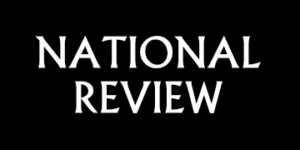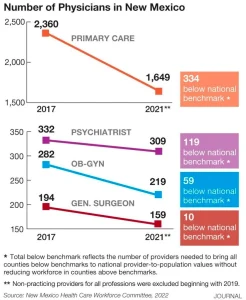RGF opinion: Handing MLG the mic should disqualify Harris for president
08.27.2024
The following appeared in Albuquerque Journal on August 27, 2024.

“I refuse to join any club that would have me as a member.” Groucho Marx
Since President Joe Biden left the presidential race, his replacement, Vice President Kamala Harris, has been vague about her policy ideas. In a few areas, like abortion, we know her positions clearly. And in a few isolated cases she has made detailed statements — $25,000 payments to first-time home buyers and not taxing tips.
But, the best way to know someone is by the company she keeps. At the recently-completed Democratic National Convention New Mexico Gov. Michelle Lujan Grisham was given a prime time speaking slot.
The idea that anyone would want to associate themselves with a politician who has so badly failed her state should call into question the judgment of candidate Kamala Harris. The Harris/Walz campaign is not moderate. In fact, if elected, they will pursue a failed extremist left-wing agenda like the one Lujan Grisham has pursued to the detriment of New Mexicans.
But first, it is worth noting that New Mexico’s oil and gas industry generated a mind-blowing $15.2 billion in fiscal year 2023. That’s about 50% more than New Mexico’s entire general fund budget.
New Mexico’s failures are the result of bad policy. We have plenty of money and the best weather and bluest, sunniest skies in the nation. Yet New Mexico has struggled badly under this governor. Here is a list of some of Lujan Grisham’s many failures since she took office in 2019:
New Mexico’s education system is the worst in the nation and it has gotten significantly worse since Lujan Grisham took office. New Mexico is ranked 52nd across the board on the Nation’s Report card, also known as NAEP.
Despite ample money to spend on education and programs targeted at children, New Mexico’s children are not doing well. The overall condition of our children is ranked 50th by Annie E. Casey in the annual Kids Count report.
A year ago the governor blatantly disregarded the Second Amendment to the U.S. Constitution by attempting to ban guns in Albuquerque. Her unconstitutional approach was rebuffed by the courts and even anti-gun zealots like David Hogg.
The governor’s restrictive COVID policies completely failed. New Mexico had some of the most stringent lockdowns, including keeping kids out of school for over a year, and yet we had the third-highest COVID death rate among U.S. states. Lujan Grisham has not apologized for her numerous errors or her high-handed approach during COVID.
MLG pushed a completely unrealistic electric vehicle mandate through an unelected board that includes a requirement that 43% of vehicles delivered to New Mexico be electric within two years, summer of 2026. The current EV market share is 4.59%. Her mandate will fail, but will have dire impacts on car dealerships and taxpayers.
While the governor, and Harris, talk about addressing New Mexico’s housing shortage she also has imposed policies, including mandating EV chargers, that artificially drive up the cost of housing.
The governor’s Energy Transition Act that passed in 2019 destroyed jobs and tax revenues on the Navajo Reservation and has already contributed to electricity shortages in New Mexico.
New Mexico has the highest percentage of Medicaid — welfare — recipients in the nation. The Legislative Finance Committee places the percentage of Medicaid recipients at 47%. When such a large portion of the population is on welfare programs like Medicaid it saps the work ethic of recipients and reduces the desire to get a job.
Despite her sudden urgency on the issue, New Mexico’s crime is worst in the nation and Lujan Grisham has done little about it. She’s never supported GOP bills in the Legislature, she supports soft-on-crime “progressives” in Democratic primaries, and she has refused to target soft-on-crime Albuquerque Mayor Tim Keller.
Harris can avoid making detailed policy statements, but the failures of her friends like Michelle Lujan Grisham should speak loudly.
Paul Gessing is president of New Mexico’s Rio Grande Foundation, an independent, nonpartisan, tax-exempt research and educational organization dedicated to promoting prosperity for New Mexico based on principles of limited government, economic freedom and individual responsibility.
























